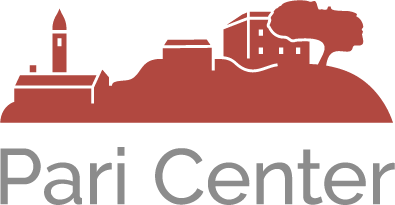Your cart is currently empty!

Seizing the Underlying Unity of Science, the Arts and the Sacred
- This event has passed.
August 29, 2023 – September 5, 2023 CEST

Dates: August 29 – September 5, 2023
Speakers: Mary Attwood, John Cleese (via Zoom), John Krakauer, Mervat Nasser, Melissa Nelson, John Pickering, Jordi Pigem, Mark Vernon
Curated and Chaired by: Àlex Gómez-Marín
Location: Pari, Italy
Price: 1995.00 euros
which includes:
- a 7-night stay in private accommodation;
- breakfast, lunch and dinner at the local restaurant featuring locally sourced produce and traditional dishes;
- the water, wine, and coffee provided with meals;
- programmed activities and materials;
- refreshments provided at mid-morning and mid-afternoon coffee breaks.
Event: The event starts on Tuesday August 29 at 19:00 with a welcome dinner and ends on Tuesday September 5 after lunch.
About the Event:
There was a time when understanding was unified and spoke to our inner wholeness. This initial vision was lost, leading to a bifurcation of nature that has impeded human flourishing. In the medieval hilltop of a Tuscan town, we will seek to explore and experience the underlying wholeness that was initially present in the spirit of the arts, the scientific mind, and the sense of the sacred.
Participating in an event at the Pari Center means not only meeting with scholars and experts but living for a week in a medieval village, mingling with the local population, eating local dishes and drinking local wines, appreciating the beauty of the surrounding countryside, and participating in a very gentle way of life far from the frenzy of work and city living. David Peat compared Pari to an alchemical vessel—a place where transformation can come about—as well as an opportunity to pause for a moment and re-assess one’s life. It’s a unique opportunity open to everyone.
Please contact Eleanor if you would like more information about this event at: eleanor@paricenter.com
The 20th century composer of devotional music, John Tavener, has written of the “one simple memory,” a deeply buried sense of a time when understanding was unified and spoke to our inner wholeness. In that period the artisan, miner, metal worker and artist alike were considered as the midwives to nature, aiding her in her striving to perfection. The physicist Wolfgang Pauli believed that this sprit was still alive in the 17th century when the quantitative science of Kepler and Galileo coexisted with a more deeply symbolic approach to nature and matter—each complementing the other. This later vanished in the hands of the followers of Descartes and Newton and, for Wolfgang Pauli, the ‘spirit in matter’ was banished for over two hundred years. Particularly in the twentieth century, physics (and subsequently other major disciplines, mirroring themselves in it) had lost its initial vision and become obsessed with a “will to power” as it sought control over nature. A “bifurcation of nature” —the harsh separation of reality as conceived by science and as experienced by humans (including scientists) —, in the words of mathematician and philosopher Alfred North Whitehead, is one of the greatest fallacies of modernity and a major impediment to human flourishing. However, a “resurrection” of spirit within matter may be at hand today. Such wholeness can be explored in the medieval hilltop town of Pari, Tuscany, for in the Middle Ages nature, beauty and the sacred were seen as one. The presenters and participants who come to Pari will bring together many skills to the discussions on the relationship of religious ritual to sacred theatre; of brain activity to the orders of music and mathematics; the ultimate nature of reality as seen from these various disciplines; limitations to knowing, and questions of the origin of the universe. Topics move towards questions that stretch the limits and boundaries that are currently placed around science, the sacred and the arts. We will discuss, and hopefully experience, the underlying unity that was initially present in the spirit of the arts, the scientific mind and the spiritual quest. We shall seek to “re-member” such one simple memory — indeed, we have taken as our maxim a quotation from Carlo Levi “The future has an ancient heart.”
Presentations
The Art of Seeing: Rediscovering the Four Senses Hermeneutic
Mary Attwood
The Humanities as an Emergent Level of Explanation
John Krakauer
The Return of Hermopolis as Healing Memory
Mervat Nassar
The Journey is the Goal and Beauty is our Guide
John Pickering
Dante, Blake and the Revelation of Unity
Mark Vernon
Information
Additional Information about the event – the pdf
